Mayflower or Trailing Arbutus—Massachusetts State Flower
Epigaea repens
Mayflower or trailing arbutus is an evergreen subshrub, its prostrate woody stems hidden in the forest litter and mosses.
A hundred years ago, in 1918, it was chosen to be the state flower of Massachusetts.
A few competing bills had been introduced starting from 1893:
one in favor of mountain laurel, one suggesting water lily,
and another three (at different times) in support of mayflower.
After all the bills failed to gain approval, the General Court and Department of Agriculture decided to run a state-wide vote
of schoolchildren, and in 1918 mayflower received more than twice as many children's votes as water lily! With its stout,
wrinkled evergreen leaves and fragrant flowers, this is in fact a very attractive plant. Even though mayflower has been protected
by a special law, it is becoming more and more rare in the state whose emblem it represents—mostly due to lack of appropriate
habitats, woods on sandy soil. Its favorite environment in Myles Standish SF are old white pine plantations. "Mayflower" may
be mistakenly associated with the name of the famous ship. However, the British vessel could not be named after an unknown
American plant. The Mayflower was named after hawthorn, a sacred Celtic plant whose other British name is "mayflower." One
can see a sketch of a hawthorn flower on her stern.
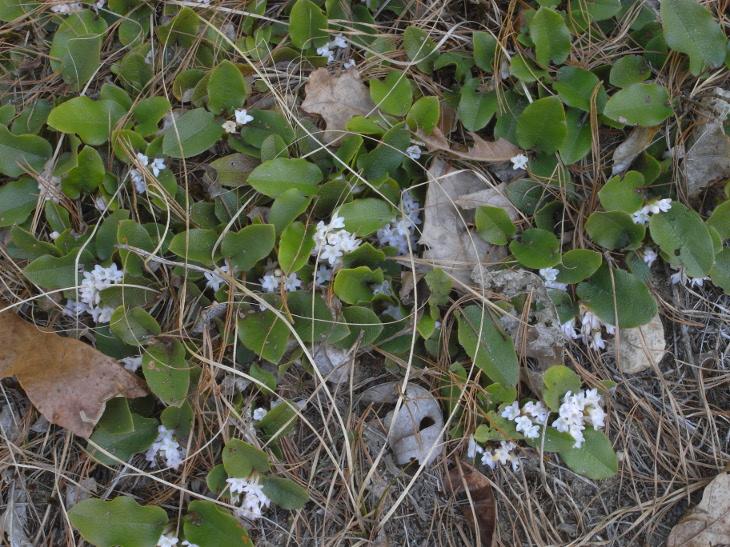
Myles Standish SF, Carver, March 30 (an early onset of spring in 2012). Somewhat contrary to its name, mayflower flowers throughout
April and early May.
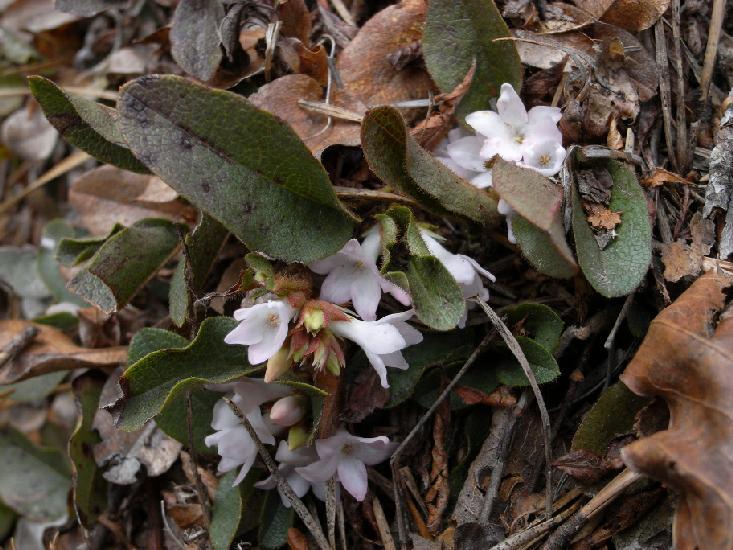
Fragrant flowers may be white or pink. April 16, Myles Standish SF, Plymouth
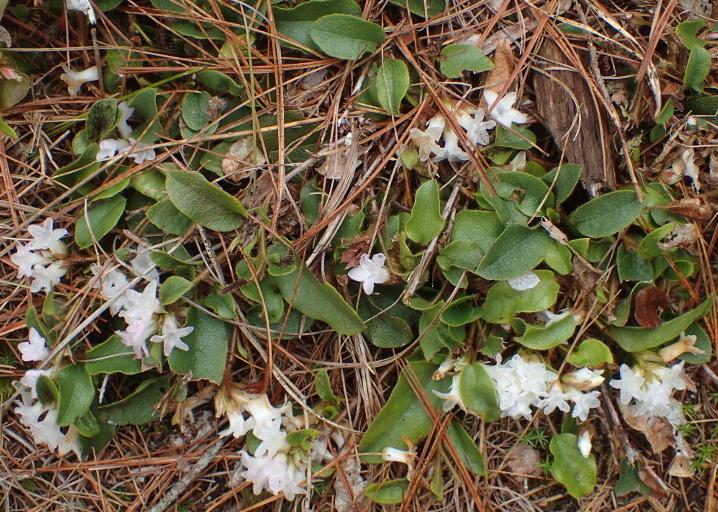
Last flowers. Myles Standish SF, Carver, May 7
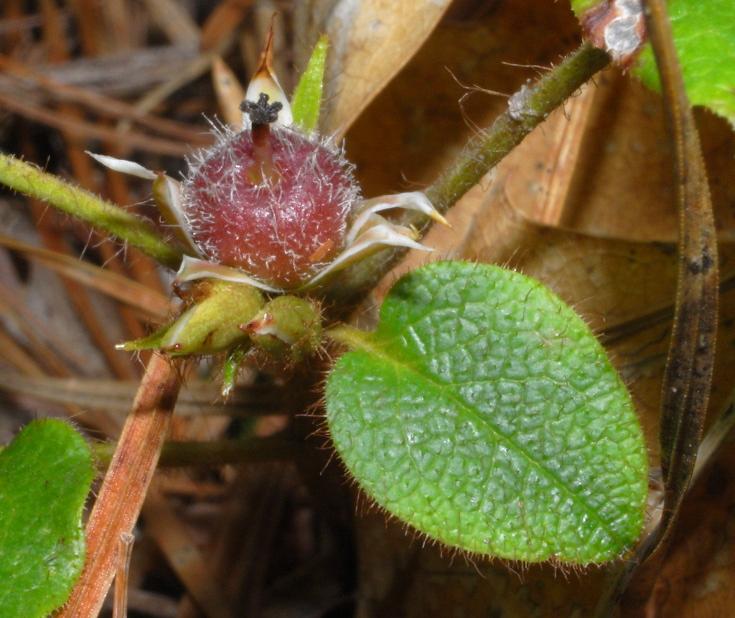
May 11, Massasoit Wildlife Refuge, Plymouth
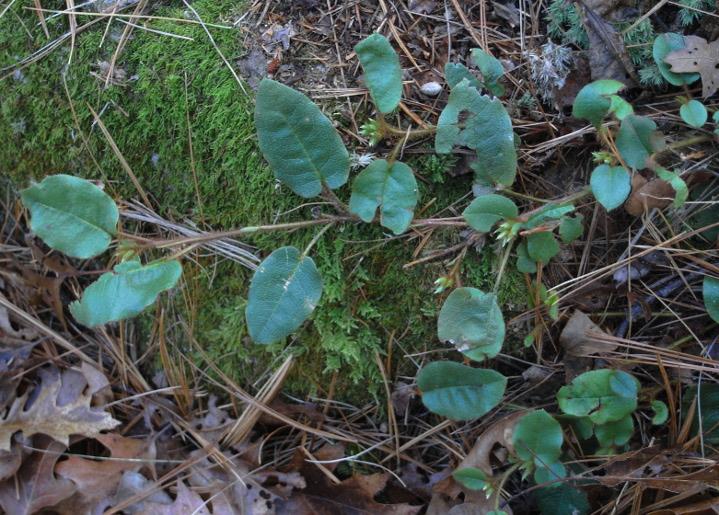
We don't often see the woody trailing stems, as they are hidden in mosses and forest litter most of the time. November 30,
Bourne.
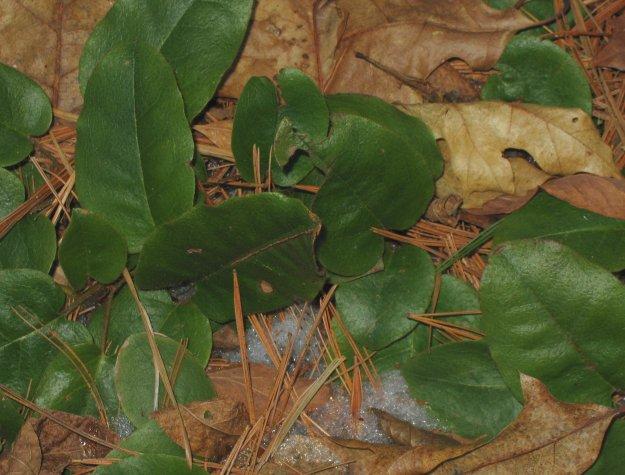
February 17, Massasoit SP, Taunton